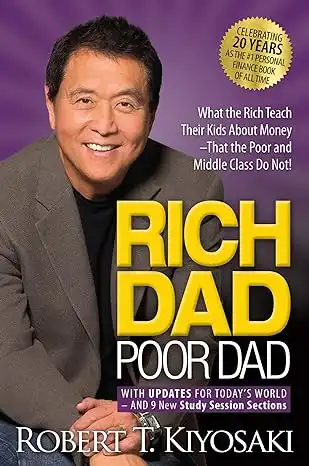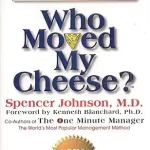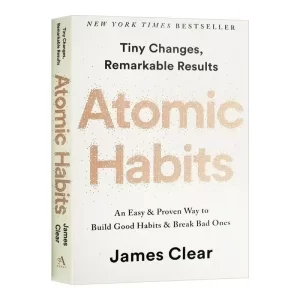


Rich Dad Poor Dad by Robert T. Kiyosaki: What the Rich Teach Their Kids About Money That the Poor and Middle Class Do Not
Original price was: $18.92.$13.35Current price is: $13.35.
- Description
- Reviews (0)
- Video
Description
April of 2022 marks a 25-year milestone for the personal finance classic Rich Dad Poor Dad which still ranks as the #1 Personal Finance book of all time. Although 25 years have passed since Rich Dad Poor Dad was first published, readers will find that very little in the book itself has changed — and for good reason. While so much in our world is changing at a high speed, the lessons about money and the principles of Rich Dad Poor Dad haven’t changed. Today, as money continues to play a key role in our daily lives, the messages in Robert Kiyosaki’s international bestseller are more timely and more important than ever.
Milestones
While there is a milestone to commemorate — and a new section in the book on Why Milestones Are Important — preserving the integrity of the original content is testimony to the fact that this book has truly stood the test of time. The sidebars throughout the book (that were updated for the 20th-anniversary edition) have been updated again, but the core principles that parents and grandparents — those who embraced Robert’s story and messages 25 years ago — are sharing with new generations who have found that its timeless wisdom and no-nonsense lessons can be applied to anyone’s life and their vision for a future that includes taking control of their finances.
People of all cultures and countries celebrate milestones. We use them to measure time, mark progress, reflect on the lessons we’ve learned, and celebrate accomplishments… and they give meaning to our life’s journey. They are a way that we integrate past, present, and future… looking back at where we started, where we are today… and the promise of all that the future can hold.
In the quarter century that has passed since Rich Dad Poor Dad was first published — 25 years since April 8, 1997 — so many things in our world have changed. But the one thing that has not changed is the pressing need for and the power of financial education. Money is still a mainstay of our lives, like it or not, and technology has brought both speed and innovations to the world of money. In an ever-changing world, we can all still get smarter when it comes to money… and learn as much as we can to secure our future.
Still the One… #1
Today Rich Dad Poor Dad consistently ranks among bestsellers around the world in the categories of Personal Finance, Parenting, and Investing, has been translated into 38 languages, and has sold more than 40 million copies worldwide.
Rich Dad Poor Dad is Robert’s story of growing up with two dads — his real father and the father of his best friend, his rich dad — and how both men shaped his thoughts about money and investing. The book explodes the myth that you need to earn a high income to be rich and explains the difference between working for money and having your money work for you.
In many ways, the messages of Rich Dad Poor Dad, messages that were challenged and criticized 25 ago, are more meaningful, relevant, and important today than ever.
Rich Dad Poor Dad…
• Explodes the myth that you need to earn a high income to become rich
• Challenges the belief that your house is an asset
• Shows parents why they can’t rely on the school system to teach their kids about money
• Defines once and for all an asset and a liability
• Teaches you what to teach your kids about money for their future financial success
Top Review:
Hey there all.
I recently completed reading Rich Dad Poor Dad: What The Rich Teach Their Kids About Money That the Poor and Middle Class Do Not!
Let me tell you that this book has been in my peripheral vision for quite some time. Or at least the title of it has been!
I finally read it and found that it completely fits my current learning cycle, so there was much that I could see and almost immediately apply readily.
First, I will preface this with the fact that the title always sounded like it was about how to transform yourself from a poor dad to a rich dad. This was not so.
Although it has the information within to create that transformation, at least if you choose to apply some of the principles, and of course in theory!
Know this, though, this is not a rags-to-riches overnight book.
It is a journey over a fair span of a lifetime.
Robert T. Kiyosaki tells his tale as a young man growing up in Hawaii, his paternal father being a well-educated man who throughout this book always seems to be on the verge of monetary disaster, even though he followed in seemingly appropriate steps required to climb the ladder to success.
His adopted father had the school education of 8th grade; what his adopted father had was a key understanding of finance, assets, debts, expenses etc., and had over time become incredibly wealthy.
Now how Robert came to adopt Rich Dad by way of Rich Dad’s son Mike.
The two of them were close friends and at a young age (3rd grade).
They had decided that they would like to become rich. They wanted to make money.
Which is what they quite literally did attempt to do. They went around and collected empty toothpaste tubes, created a cast, and began to mint their nickels. Rich dad saw this and while found the overall situation to be humorous, he informed them of the imposing legalities of their situation and offered to have them stop by his office to work for him.
Initially, the boys worked for him for a very low wage, 10c an hour!
After some time, Rober becomes fed up and demands a raise, or else he is going to quit. Whereby rich dad imparts a critical lesson: Most people will work for the money and if they don’t receive the respect or monetary wage that they feel is appropriate, they will go elsewhere.
However, once they do so, they find themselves in the same situation.
They were more than likely going to accept a paycheck knowing that they would struggle financially. Some may even take a second job, working harder and still accepting a measly gain. Robert asks “So what will solve the problem?”
Rich dad points to his head and says “This stuff between your ears.”
All of this is distilled into what Robert calls lesson #1 :
“The poor and the middle class work for money. The rich have money to work for them.”
What’s entertaining is that immediately following this even, rich dad has the boys work for him for free! This imparted the lesson that you work to gain knowledge, not necessarily money AKA the rich don’t work for money.
He then proceeds to illustrate in the book through a few diagrams how the rich and poor view their money in a cash flow pattern and how the poor view the job as income and expenses as food, shelter, transport, etc, neglecting the assets and liabilities columns.
The middle class is fairly similar with income being received for their job, however, they do tend to recognize the liabilities column.
Where the rich differ is that they have an assets column in which you will find stocks, bonds, real estate, and intellectual property which will provide them with their income, which they continue to invest into more assets. Assets create wealth. Seems like a fairly simple formula. The major takeaway here is not so much that assets create wealth, it’s how to identify an asset, that little gem didn’t seem to present itself clearly while reading, but it is there nonetheless!
These views and philosophies are fully fleshed out in the remainder of the book, denoting that most or many will fall prey to the ongoing rat race whereby they build a substantial amount of debt through poor financial education and ultimately have to work to stay the course. Rarely being able to lift above and see a way out.
Robert offers some alternative views on how we are taught to view finances, and not everyone may agree or follow his advice. He does suggest that if you are not willing to take risks and prefer to follow another route, you should begin at a very young age to invest.
It may take a while longer to create a fortune for yourself, however, it is the recommended way! I don’t think that you can look anywhere in the financial world and that same advice is not given!
While this touches on the surface of what is in this book, I do hope that it whets your appetite to continue to read even if it is to teach your children or others about financial literacy.
Overall the book was a simple read with an easy-flowing storytelling style, and it filled my head with plenty of food for thought!
On a scale of Rich Dad to Poor Dad, I found this to be a fairly enriching read!
Be the first to review “Rich Dad Poor Dad by Robert T. Kiyosaki: What the Rich Teach Their Kids About Money That the Poor and Middle Class Do Not”
You must be logged in to post a review.























Reviews
There are no reviews yet.